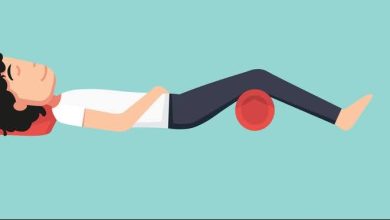Types of Hemorrhoids and Treatment Options Available

Discomfort, itching, pain, or seeing blood on the toilet paper after you’ve done your business might alarm you. But don’t worry; these are just symptoms of hemorrhoids, or piles, which can happen when the veins in the lower part of your rectum and anus are swollen. Bleeding occurs because the walls of the blood vessels in your rectum are stretched to the extent that the veins bulge and get cut when you exert effort during bowel movements.
Having this problem is common to both men and women and is one of the most common causes of rectal bleeding. That being said, most cases of piles aren’t severe, and home treatments can improve the symptoms, or sometimes they go away on their own.
However, you should also remember that not all rectal bleeding is the same and may have different symptoms. Depending on the severity of the bleeding, you have to first seek advice from a health professional.
Internal hemorrhoid
Internal hemorrhoid is found inside your rectum. Symptoms of this type are generally not seen because of their location and can sometimes heal independently. Also, they don’t hurt because of the lack of pain-sensing nerves inside your rectum.
However, if internal piles get more prominent and irritated, they can present pain, itching, burning sensation, swelling around the anal area, and bleeding.
Prolapsed hemorrhoid
Prolapsed hemorrhoid happens when the internal hemorrhoid swells and sticks out of your anus. They look like swollen red lumps or bumps coming out of your anus and have no other symptom than protrusion and its corresponding inconveniences (pain, itching, burning sensation). Using a mirror, you can examine the area yourself; however, only a doctor can assign a grade to a prolapsed hemorrhoid based on its severity.
Grade I: No prolapsing
Grade II: Minor prolapse, may be retracted by themselves. Meaning they may only prolapse when you put pressure on your anal area, such as bowel movements, and then return to normal afterward.
Grade III: Prolapsed, and you have to push it back in yourself. This grade might need treatment to not become too painful or infected.
Grade IV: Prolapsed and causes a lot of pain when you try to put it back yourself. These need surgical treatment to prevent pain, discomfort, and other complications.
External hemorrhoid
External piles are not always visible but sometimes form lumps on the anal surface. But when they swell, they are relatively easy to spot. Since they occur under the skin around your anus, you experience more pain compared to other types because the skin has more pain-sensing nerves.
Symptoms can be itching, pain, and occasional bleeding. Sometimes, they fill with blood that can clot. Even though it is pretty graphic, external piles are not dangerous but rather cause inconveniences such as pain and swelling.
It is still best to see a doctor regarding your hemorrhoid situation because it affects daily life by feeling pain or discomfort when you sit or do physical activities.
Thrombosed hemorrhoid
This hemorrhoid type contains a blood clot (thrombosis) within the hemorrhoid tissue. They may appear as lumps or swelling around the anal or rectal area. It happens when a hemorrhoid, whether internal or external, becomes complicated and forms a blood clot.
Compared to other types, symptoms of thrombosed piles are more exaggerated, including intense pain, itchiness, swelling, and blue coloration around the affected area.
Quick treatment is necessary for this type because of the risk of losing blood supply and preventing further damage to the affected area and its surrounding tissue.
Available Treatment Options
As said earlier, most cases of piles are treatable with home treatments or over-the-counter products. However, the treatment depends on the type, degree of prolapse, and overall severity of your symptoms.
That being said, here are options to relieve symptoms that aren’t too severe:
Note: Before buying medical products from the store, ask advice from a medical professional or your pharmacist to gauge what you need and prevent unnecessary expenses or buying the wrong medication.
Hemorrhoid creams
Hemorrhoid creams are topical treatments that can be bought over-the-counter in pharmacies. Choose hemorrhoid creams that contain a local anesthetic to temporarily soothe pain and apply to the affected area to bring relief.
Petroleum jelly
Applying petroleum jelly inside and around the edge of the anus can ease painful bowel movements by soothing and preventing irritation of the affected area. However, avoid scratching the area if itchiness is an issue.
1% Hydrocortisone cream
Hydrocortisone creams treat minor pain, swelling, itching, swelling, and discomfort caused by piles. Apply 1% hydrocortisone cream only on the skin’s surface outside the anus, and application inside is not recommended. Since this medicine is a steroid, you need to have a prescription from your doctor to ensure that the other drugs you are taking don’t interact with the hydrocortisone medication.
Witch hazel
Witch hazel is a natural anti-inflammatory remedy that can reduce both itching and pain associated with piles. It usually comes in topical ointments that can be directly applied to external piles. Also, witch hazel, paired with aloe vera, is commonly found in the ingredients list of soothing wipes that clean your anal area after a bowel movement.
Pain relievers
Pain relievers such as Ibuprofen and Acetaminophen can temporarily relieve discomfort caused by piles. Ibuprofen helps reduce both pain and swelling in the affected area, while acetaminophen only temporarily relieves pain from piles.
Stool softeners
Having soft stools is a key strategy in preventing or minimizing piles. Stool softeners redirect water from your body into your stool to soften it and make it easier to pass, preventing constipation and reducing pressure in your bowel movement.
Home Treatment
If you prefer home treatments, you could try cold compressing the area or sitting in warm water for 10-15 minutes to relieve swelling.
Surgery
If your hemorrhoid is severe, going to the doctor is necessary for proper examination and diagnosis. In case your piles may need to be removed to prevent pain and long-term complications, some surgical procedures for removal include:
- Rubber band ligation
- Sclerotherapy
- Infrared coagulation
- Hemorrhoidectomy
- Hemorrhoidopexy
Prevention is Better than Cure
Piles get more common as you get older. Instead of waiting for it to happen, acting before and practicing these steps can help prevent hard stools and constipation, leading to rectal swelling and bleeding.
Get (more) fiber in your diet.
Fiber helps the food pass easier through your digestive system. Foods such as vegetables, fruits, whole grains, nuts, seeds, beans, and legumes are rich in fiber and must be included in your daily diet.
Fiber supplements
If you cannot get fibrous foods, you can opt for over-the-counter fiber supplements that help soften your stool. But, it is still better to eat real food than get fiber from supplements because of its additional nutritional value.
Drink adequate water
Water helps your poop flush down easier. If you don’t get enough water, you can experience hard stools that lead to constipation.
Regular exercise
To keep your blood flowing also keeps your bowels moving. Also, maintaining a healthy weight will prevent obesity, which is one of the causes of piles because of the added pressure build-up in your lower rectum.
Don’t delay your business.
Do not unnecessarily delay your poop, and use the toilet as quickly as possible as soon as you start to feel that you need to defecate.
Don’t exert too much effort during bowel movements.
In all situations, pooping is the only situation where you must not “give it your all.” Straining or sitting on the toilet for long periods puts more pressure on your veins that may cause them to swell.
Key Takeaway
Hemorrhoids can be uncomfortable, painful, and annoying, but it doesn’t lead to further complications most of the time. If your piles have been going on for a week and won’t go away even with home treatment, you might want to call your doctor to ensure you don’t have a more severe condition. Ultimately, practicing a healthy lifestyle is key to preventing these situations and inconveniences.



